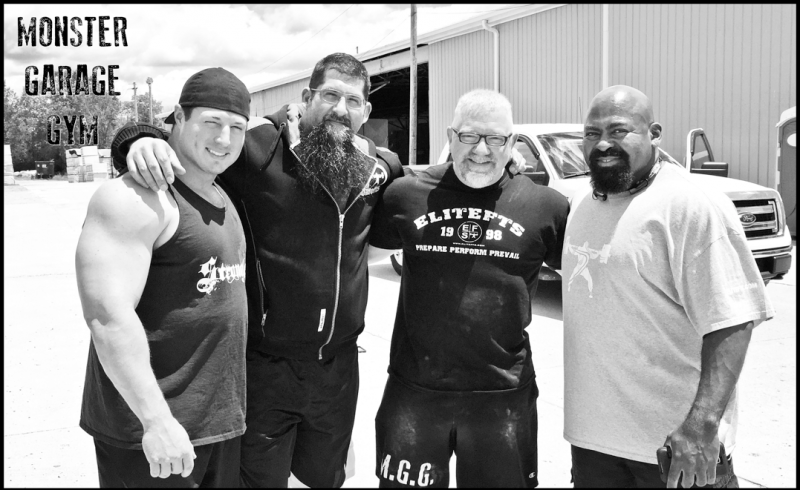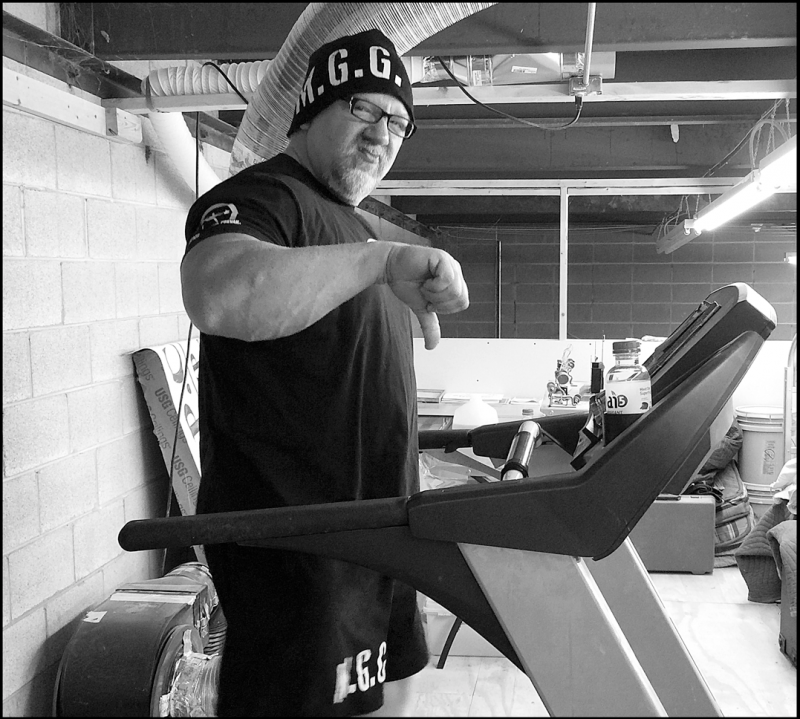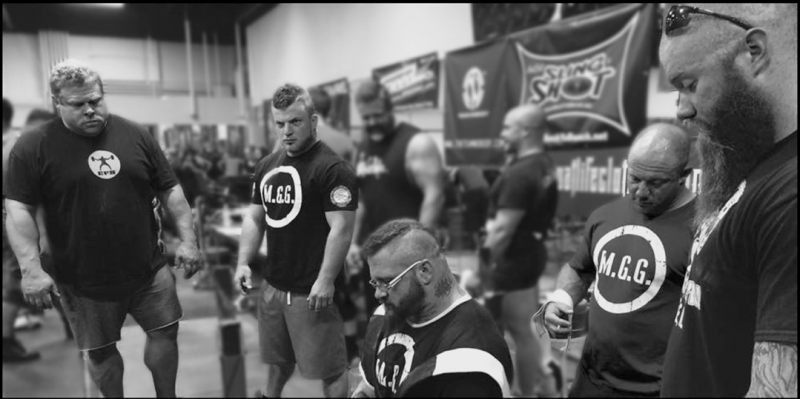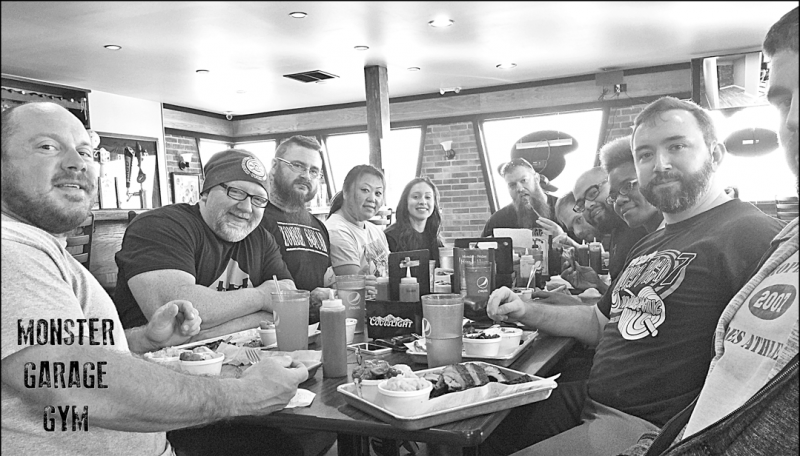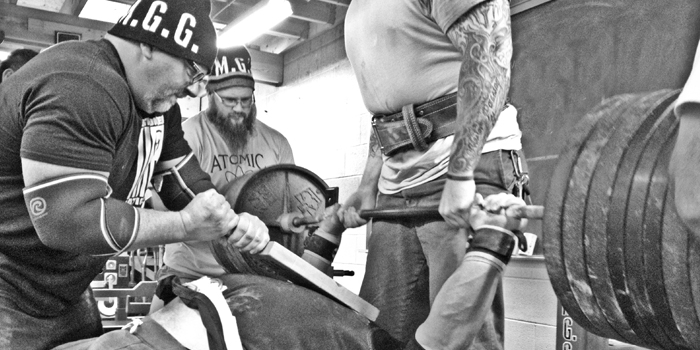
One of the powerlifting rules of thumb is that unless you have been in the competitive powerlifting game a good long while, have had a high level of success, and are going after an ALL TIME record or major title, there really is no good reason to drop a large percentage of weight just to fit into a weight class. In fact, for the average competitive powerlifter, it is a best practice for you to train within the weight class you are going to compete in.
RECENT: 50 Things All Handlers Need to Know
With that said, let’s look at the lifter who just has to drop a couple of pounds to make a weight class, which is the vast majority of powerlifters. A few pounds to drop can be as simple as having a last meal prior the night before the weigh-in a little earlier in the evening, watching/restricting your sodium intake a couple of days prior to the weight-in, substituting white fish for red meat, or even getting a little sweat going on the treadmill to name a few.
Legendary powerlifter, Steve Goggins, (far right) knows a little something about ALL TIME records.
These methods I call suitcase methods. I say that as to a degree our stomach is like a suitcase and an empty suitcase weights x amount, thus when items are added to the suitcase, well, the suitcase just weighs more. Eating a steak for example can take 48 to 72 hours to get out of your intestine. Some foods that are less fibrous take from 6 to 24 hours to digest. Point being, if you are only a few pounds over, it is just a matter of fine tuning the stuff in your suitcase and that is an easy manipulation to make in order to make your weight class.
So, the newer to intermediate lifter has fine-tuned their suitcase, or they have hopped on the dreadmill, or cut out a little dietary sodium, and they go to the weigh-in and they land right on the money and the make the weight class. What happens next? You already know the answer to that, as we all have seen the next step played out on our social media feed like clockwork: The lifter makes weight and then it is Oreos, donuts, Big Macs, and cell phone photos galore. They eat anything and everything.
Here is the literal food for thought for those lifters: Why the fun food binge after the weigh-in? I ask that question as 8-16 weeks of hard work has gone into their meet prep. They have followed their programming down to the percent and they are hitting numbers as high on the sigmoid curve as can be. Now it is a mere 24 hours prior to the meet and in those last hours prior to the day of the meet, the lifter who couldn’t (or who didn’t have the discipline to) stay in their weight class is celebrating the numbers on the scale and eating all the feel good foods they can get their hands on.
Monster Garage Gym owner: Eric Maroscher on the dreadmill
What I am trying to illustrate here is that in 24 hours, the powerlifter is going to place themselves in a situation where they are going to take nine attempts in three different movements. Of those nine attempts, three will be 100% max effort attempts. The day of competition will be filled with both physical and emotional stress, the day will be very long, the physical and mental demands will be great, and just 24 hours ago the lifter decided that after weeks engaged in a brutal training cycle, they will fuel this finely tuned and prepared machine with comfort food and empty calories.
We put on a coat to prepare for a 30 second walk to our car in the winter, we get out the umbrella to prepare for a walk through the rain, yet some lifters eat till they are filled to the rim with what hardly even qualifies as food after a weigh-in and just 12-24 hours prior to an event that will last for hours and they have spent months preparing for.
MORE: Magnesium and Vitamin D3: Two Neglected Parts of the Power Game
This is the ironic truth we often see and my thoughts for you, as you prep for your meet: be able to see the counterintuitive nature of this. Just because the weigh-in is done, the work has yet to take place and the hedonistic consumption rituals need to wait for the next day.
Recently I discussed two of the most neglected nutritional parts of the power game and the binge before the meet negates both of these essential nutrients. One nutrient essential to success with regard to strength and power is magnesium. The magnesium requirements with regard to the upcoming meet are going to be staggering as the mitochondria in the muscle cells will be trying to keep ATP levels greater than the body’s demands. The RDA for magnesium is 400mg per day and that is for a person who is just sitting in a cube behind their computer for the day. If 400mg is what is required on a daily basis for no more of a physical demand than basically just sitting and breathing, imagine the magnesium needs the powerlifter will have for the duration of a powerlifting meet, nine attempts over a period of hours.
Meets can be a grueling experience and last for hours. Being prepared is a critical element toward your success.
The powerlifter who smashed the box of donuts is getting 13 mg of magnesium per donut. Just three dozen more donuts big boy and you will have amassed enough magnesium to fuel your mitochondria to produce enough ATP to sit behind a desk for a day. Having said that, the 13mg of magnesium from a donut is 13mg more than you get from an entire package of Oreos, as an entire package yields ZERO mg of magnesium.
“Okay, sure, but I had a Denny’s grand slam after my weigh-in.”
When you break that grand slam down:
- 2 Pancakes 10 mg
- 2 Eggs 10 mg
- 2 Bacon 6 mg
- 2 Sausage 18 mg
- Hash browns 27 mg
- Coffee 7mg
- Orange juice 7mg
The total is 85 of the 400mg needed just to sit behind the desk.
To put this in perspective, a bowl of oatmeal and buckwheat pancakes (buckwheat actually contains no wheat, it is actually a seed that is high in protein and antioxidants) blasts you well past the 400mg mark. The feeding after the weight in is not about the calories; it is about what those calories can do for your performance. After all, if the lifter is just worried about gaining the weight back, then let’s go back to the suitcase example. If they are trying to gain their weight back in a day by eating everything, they are just filling the suitcase up with the weight of the food. So again, it is not about the calories, but what the calories you take in after the weigh in will do for your performance. Keeping in mind, there is a finite amount of calories one can take in during that 12-24 window between the weigh-in and the start of the meet warmups so make those calories count.
Post competition victory meals are far more satisfying than a post weigh-in binge.
The mitochondria makes the ATP (energy) for your performance. The magnesium is the stuff that not only helps the mitochondria make the ATP but is the stuff required to make more mitochondria, which in turn makes the ATP which in turn gives the lifter the energy to produce the power when in competition. See where I am going with this?
The point I am illustrating for the serious powerlifter is that the last 24 hours prior to the meet are as important as each rep and set in your meet prep cycle. Within the bigger picture, all that training can be minimized and compromised when the body is desperately calling on its muscles (at the micro-level, the mitochondria, the little guys that make the energy), and the magnesium is simply not there to start nor finish this process.
The bottom line is this: bypass the post weigh-in celebratory binge and opt for the smarter meal choices that include foods high in magnesium and other essential nutrients for that 24 hours. Make those post weigh-in calorie choices wisely so the calories work for you. Donut and Oreo time comes after you have accomplished the goals of the meet, not after merely weighing in.
Wishing you the best in your meet prep. Ever onward.










